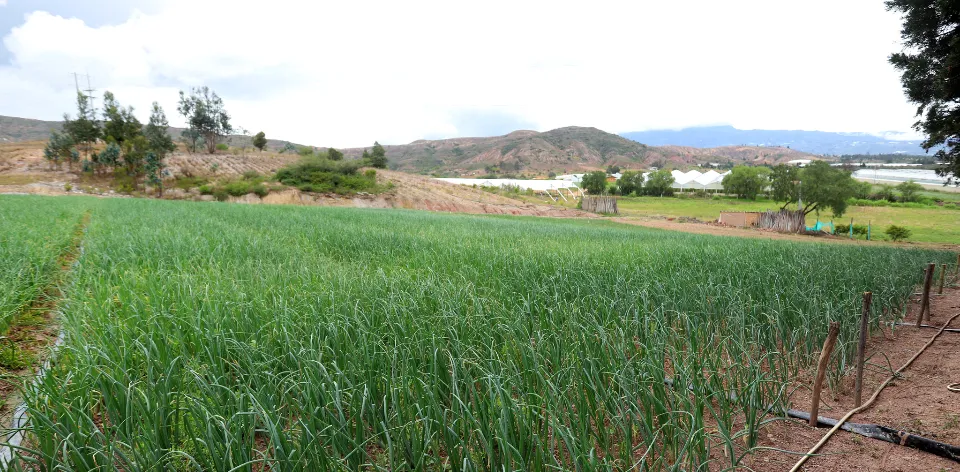PRESS ROOM
 7/6/2024
7/6/2024
Nariño Leads in Spring Onion Yield, According to UPRAs Production Cost Bulletin

The central region of Nariño stands out for achieving the highest yields per hectare, surpassing eastern Risaralda by 7.8 tons.
The unit cost difference between Nariño and Risaralda is $198 due to the intensive use of inputs like seeds and fertilizers, which in Nariño represent 67.1% of production costs.
Bogotá D. C., (@Minagricultura, @UPRAColombia, @claudialili76). The spring onion production cost bulletin for the second half of 2023, prepared by the Rural Agricultural Planning Unit (UPRA), highlights the central region of Nariño as the leader in yield per hectare compared to the regions of Risaralda and Cauca. This analysis reveals significant differences in production efficiency and unit costs among these important producing areas of the country.
"The study, which covers the center of Nariño, the east of Risaralda, and the east of Cauca—areas that represent 18% of the national production of spring onions—has yielded compelling results. The center of Nariño stands out for achieving the highest yields per hectare, surpassing the east of Risaralda by 7.8 tons. This superior yield is due to advanced agricultural practices and favorable agro-climatic conditions characteristic of this region," explained Claudia Cortés, Director of UPRA.
Despite the high yields, Nariño also records the highest unit costs among the three regions studied. The unit cost difference between Nariño and Risaralda is $198, primarily attributed to the intensive use of inputs such as seeds and fertilizers, which in Nariño account for 67.1% of production costs. This situation highlights the importance of balancing productive efficiency with cost management to maximize profitability.
In contrast, the eastern region of Cauca, although reporting the lowest yields per hectare, is distinguished by its ecological production systems. These systems, which do not use synthetic chemical inputs and are based on sustainable practices, supply specialized market niches that value high-added-value organic products. This ecological orientation not only contributes to environmental sustainability but also preserves local knowledge and promotes biodiversity.
Labor and machinery represent higher cost items in the eastern regions of Cauca and Risaralda due to intensive cultural and harvesting practices. In Nariño, labor demand is equally high, especially in land preparation and harvesting, emphasizing the importance of the workforce in spring onion production.
"The results of this study provide a detailed view of the differences in efficiency and production costs of spring onions in Colombia. It is essential to continue supporting farmers in adopting sustainable and efficient agricultural practices to improve productivity and competitiveness in the market," added Cortés.
The UPRA report underscores the importance of considering regional conditions and specific agricultural practices to maximize spring onion production in Colombia. By better understanding these differences, it is possible to develop more effective strategies to support farmers and foster a more sustainable and productive agricultural sector.

